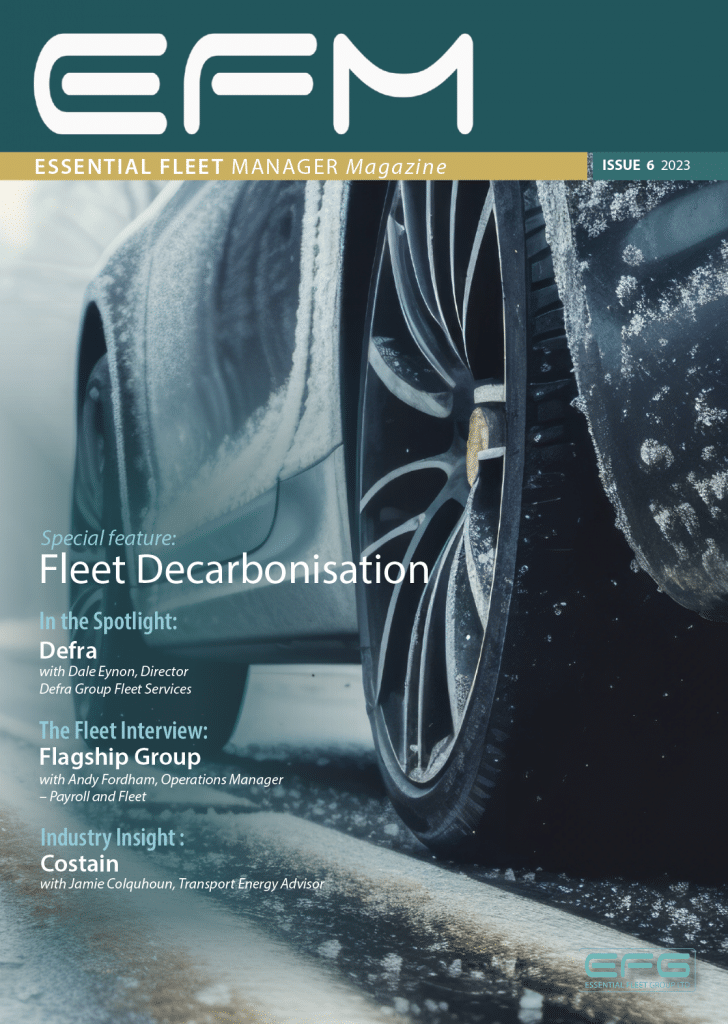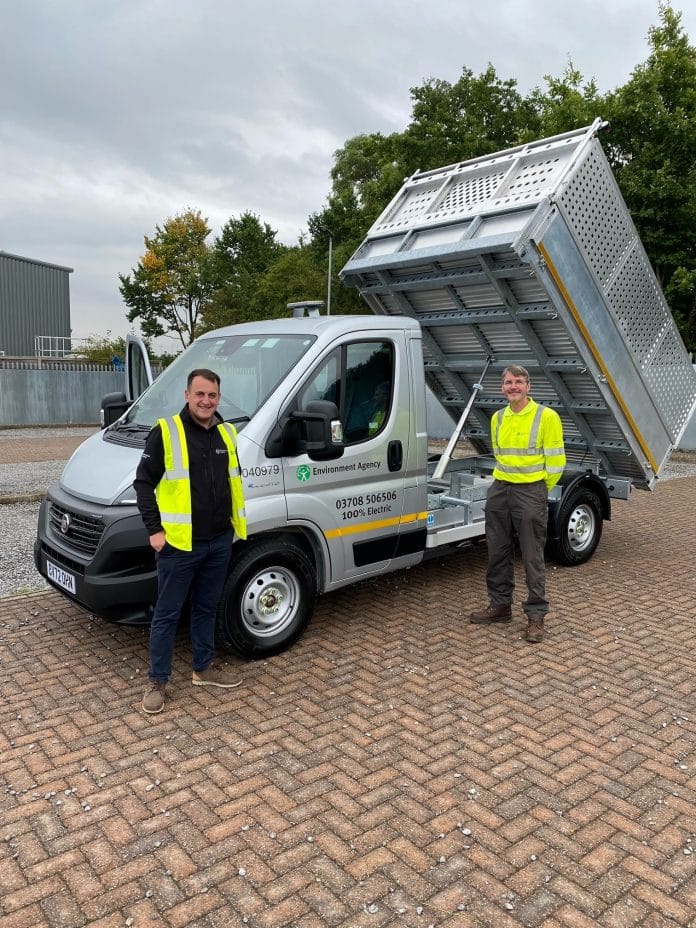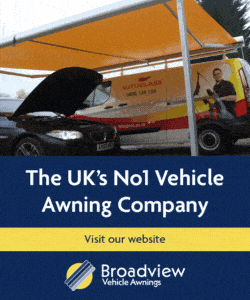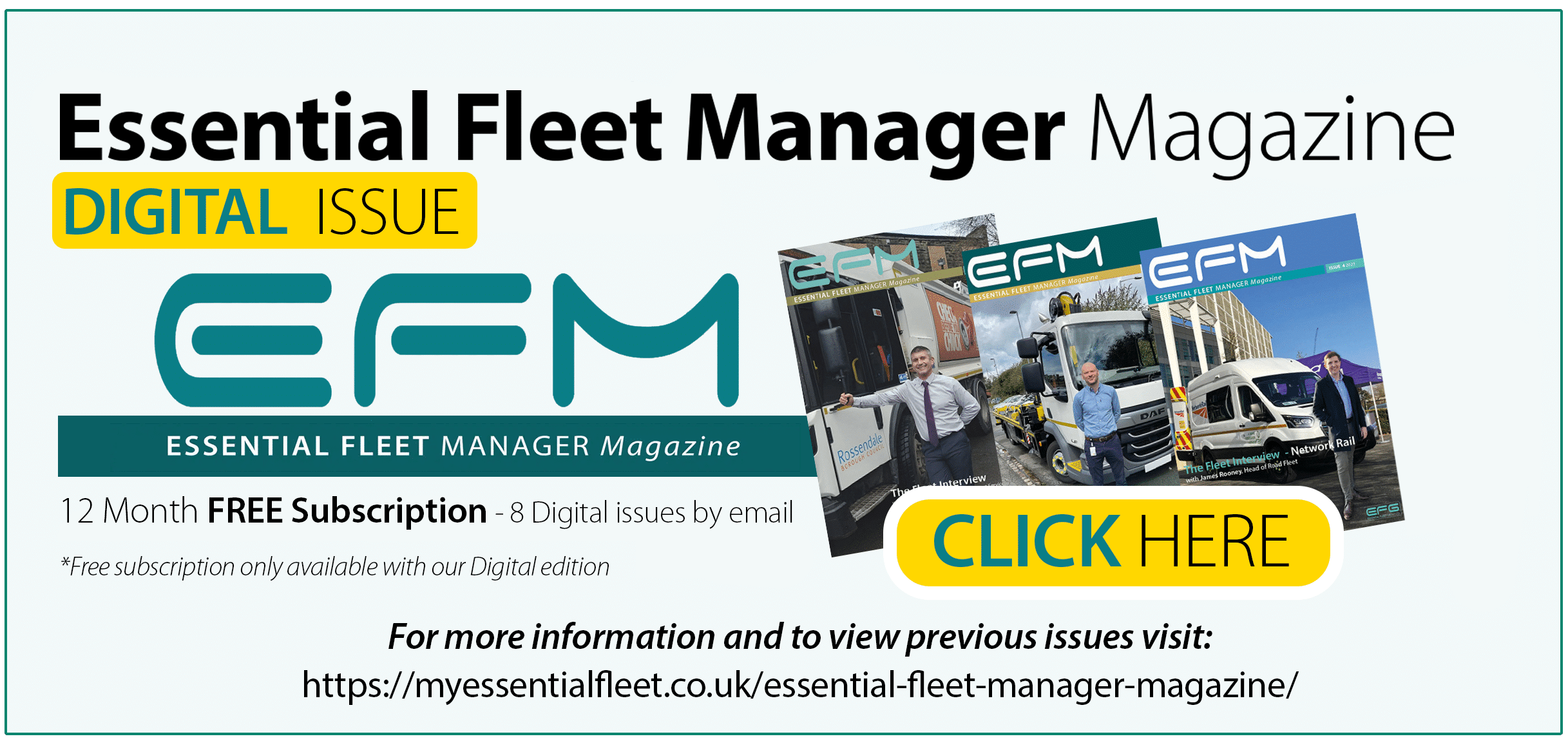with Dale Eynon – Director Defra Group Fleet Services
Introduction
To place the UK firmly on the road to decarbonisation, it has always been vital that large organisations, especially those within government, provide leadership. This is not only in the sense of setting an ethical example, but also a practical one as challenges are met and solutions delivered. Of course, a large organisation cannot successfully demonstrate that leadership without the skills, experience and commitment of dedicated individuals.
Dale Eynon has been leading the fleet team at The Environment Agency since 2005 and with the added responsibility of all parts of DEFRA since 2017. Not surprisingly, the government department with overall responsibility for the environment is under significant scrutiny to ensure that its own operations are as sustainable as possible and Dale explained to Essential Fleet Manager how plans were originally set in place, how they were challenged by global issues and how the road ahead is being managed.
The Interview
Q: What were the original plans and targets for decarbonisation set out in 2020 and how were they affected and modified following the pandemic?
The main changes were in relation to the speed at which we were decarbonising our fleet as the new Government requirement was for all vehicles under 3.5T to be zero emitting (at tailpipe) by 2027. This meant we need to change some of our targets to reflect this new and enhanced expectation. We also implemented our new Lease Car Policy which has in effect reduced the number of assets we operate as the Pandemic introduced new ways of working that further reduced our ongoing travel pattern.
Q: How did you identify which fleets assets were suitable for electrification?
All assets are theoretically suitable for electrification, but we have prioritised on the basis of what is available now and in the near future (cars and vans essentially) and what may come within the next 1-2 years (4x4s and HGVs). We are also looking at electrifying our plant and boat fleet, although this is lower down our list due to the complexity and potential cost of such transformations.
Q: Once those assets had been identified, how did you manage the process that ensured that sufficient infrastructure was in place?
We have been installing infrastructure for the past 7 years when there were very few pure EVs, but lots of Plug In Hybrid cars starting to appear in the market. As we electrify more of our fleet (currently have around 1000 electric assets on the fleet) we have continued to expand our charging network and are currently on phase 5 of this programme which will see a further 166 charge points installed over the next 18 months.
Q: As well as the environmental benefits of zero tailpipe emissions, what are the financial benefits of EVs and over what period will they be realised?
Although EVs have a higher purchase price, their running costs are much lower both in terms of service, maintenance and repair costs, but also for running costs depending on where you charge the vehicle (overnight, on site etc). The period of ROI will depend on the mileage you do but over a typical 5-6 cycle the total cost of operating should be lower for EVs.
Q: It is now accepted that there are, at times, severe constraints within supply chains that negatively affect vehicle acquisitions. How are you meeting this challenge and integrating the transition to EVs into established annual replacement programmes?
Build and delivery times for cars and commercials is now beginning to improve and as such many new assets can now be ordered and delivered within an annual replacement programme. Previously, we have had to bulk order vehicles some 12-18 months in advance and share the risk of this as best as we can with OEMs and Leasing companies.
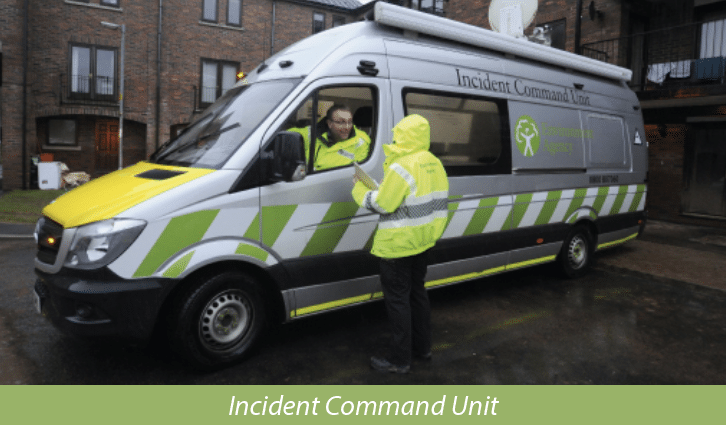
Q: How are the E-LCVs being funded and could you explain the benefits of capitalising leases?
We have moved away from outright purchase of E-LCVs at the moment in favour of a contract purchase route with our Leasing partner (Novuna). This still allows us to use capital under IFRS16 accounting rules, but gives us a speedier route to market (beneficial when supply is limited) and the option to change assets more quickly, at a low cost, if technological advances have made dramatic steps forward in terms of E-LCVs.
Q: Many vital services provided by The Environment Agency are supported by vehicles that do not currently have viable EV equivalents. Could you describe the operational demands of these services and why the vehicles in these environments must, for now, remain ICE powered?
Our main challenge to decarbonise our vehicle fleet is the lack of viable fully electric 4×4 utility pick up vehicles. We require towing capabilities of up to 3-3.5t as our incident response may involve moving strategic equipment (pumps, generators etc) to remote off-road areas where 4×4 capability combined with high ground clearance is essential. We have trialled the Maxus 2 WD pick up variant, which is suitable for some of this work but does not have the full off-road capability or towing capacity at the moment. We also need to procure around 7-800 of these vehicles over the next 4 years so a good supply of fully compliant electric 4×4 vehicles remains a challenge.
Q: When working towards strict targets, how important is regular engagement with vehicle OEMs and other suppliers so that not only current plans can be executed, but also so that modifications can be made for the future?
We can only achieve our ambitious targets for a zero emitting vehicle fleet, by working in partnership with OEMs and other suppliers. By regularly engaging with the supply chain, we can both gain insight into what is being planned as well as influencing the operational design capabilities that will ultimately help us achieve our aims. We are not the only market for this product so working with other large fleets will enable OEMs to see the size of the prize and the likely forward demand that the UK has in this market.
Q: Are you confident that zero emission technologies will be developed for all vehicle types in the near future and are there other alternatives that might provide medium term solutions?
I’m confident that there will be credible zero carbon emitting vehicles in most fleet categories, barring the very niche applications, in the next few years as there are already such products available in other world markets already and these simply need scaling up and adapting to the UK market. We don’t see many alternative mid-term solutions are present, but this is a rapidly changing market and I’m always happy to be surprised. Keeping in touch with OEMs and the general marketplace should keep you up to date on new developments.
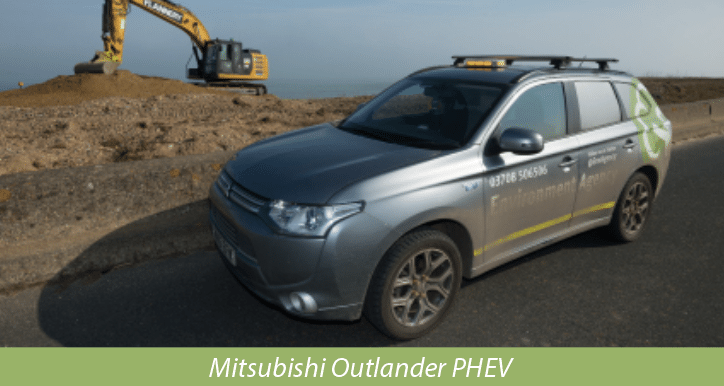
Q: In addition to the challenges of acquiring EVs that are fit for purpose, what steps need to be taken to ensure that drivers are properly trained and therefore able to gain the greatest benefit from the technology?
Drivers need to be shown how positively different an E-LCV is compared to an ICE equivalent. We do this in several ways. Firstly, we have a large volume of on-line materials (ranging from videos to information sheets etc.) available to drivers who are due an EV in the next 6 months. We combine this with tailored information and awareness sessions for drivers as well as the use of EV champions who are already using such vehicles. The overall message is that EVs are better and easier to drive, have sufficient range and infrastructure for them to undertake their duties and importantly make a huge contribution to combatting the climate emergency.
Q: With a large, diverse fleet that now has a large and growing number of EV assets, how are you managing SMR requirements and avoiding unplanned Vehicle Off Road Time? Is there a shortage of skills that is impacting on large operators?
The number of SMR providers that can support EVs (subject to the recent Rivus announcement) is generally growing, but needs to keep pace with the exponential growth of these assets on UK roads. The good news is that generally they need less SMR services and can often be fixed or upgraded via over the air software mechanisms.
Q: In your leadership roles over the last few years, how important have you found effective, clear and honest communication to be in driving positive change?
There is no such thing as too much communication as the big issue is changing the culture around the use of electric vehicles, and myth busting a whole range of issues that are often raised by new EV drivers. Once you’ve got a driver to try an EV, they are more often than not, hooked for life so communication on the benefits along with real world trials of this new(ish) technology is an absolute must. We have had to put more resource into this area of work but it is now paying back in a big way.
This article was published in Issue 6 of Essential Fleet Manager Magazine – read the issue here
